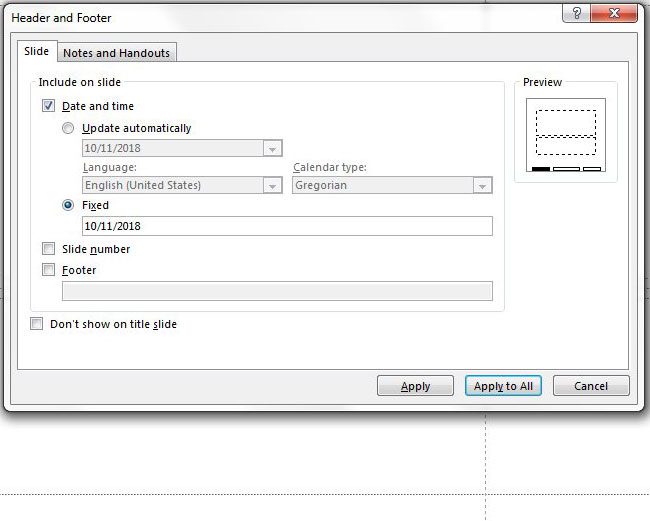While the content that you include on the slides in your Powerpoint presentation will often vary from slide to slide, there might be information or page elements that you would like to include on every slide.
Whether this is your name, your company name, or the title of the presentation, it can be helpful to put that information in your presentation automatically at the same spot on every slide.
You can accomplish this by adding a footer to your presentation. Once you add one, you have the ability to include several different elements that might be helpful. Our tutorial below will show you where to find and add the footer in Powerpoint 2013.
Include a Footer on Your Slides in Powerpoint 2013
The steps in this article were performed in Microsoft Powerpoint 2013. By completing the steps in this guide you will be adding a footer to your slides.
This allows you to include information that appears at the bottom of each of your slides, such as a presentation title or your name. Additionally, you can use this location to include the date or slide numbers.
Step 1: Open your presentation in Powerpoint 2013.
Step 2: Click the Insert tab at the top of the window.

Step 3: Click the Header & Footer button in the Text section of the ribbon.

Step 4: Choose the options that you wish to include in the footer, then select the Apply button if you only want to add the footer to the current slide, or click the Apply All button if you want to include the information on every slide in the presentation.

Now that you know how to add a footer in Powerpoint 2013, you can include this slide elements and include information that you want to repeat on each slide in your presentation.
Would you like the slides in your presentation to be portrait instead of landscape? Find out how to make your slides vertical in Powerpoint 2013 if you need a layout that is different than the default option.

Matthew Burleigh has been writing tech tutorials since 2008. His writing has appeared on dozens of different websites and been read over 50 million times.
After receiving his Bachelor’s and Master’s degrees in Computer Science he spent several years working in IT management for small businesses. However, he now works full time writing content online and creating websites.
His main writing topics include iPhones, Microsoft Office, Google Apps, Android, and Photoshop, but he has also written about many other tech topics as well.